A fungus that has been harvested for generations across the globe, the Chaga Mushroom (or Inonotus obliquus), has been gaining popularity in recent years due to it's purported medicinal benefits, and healing properties.
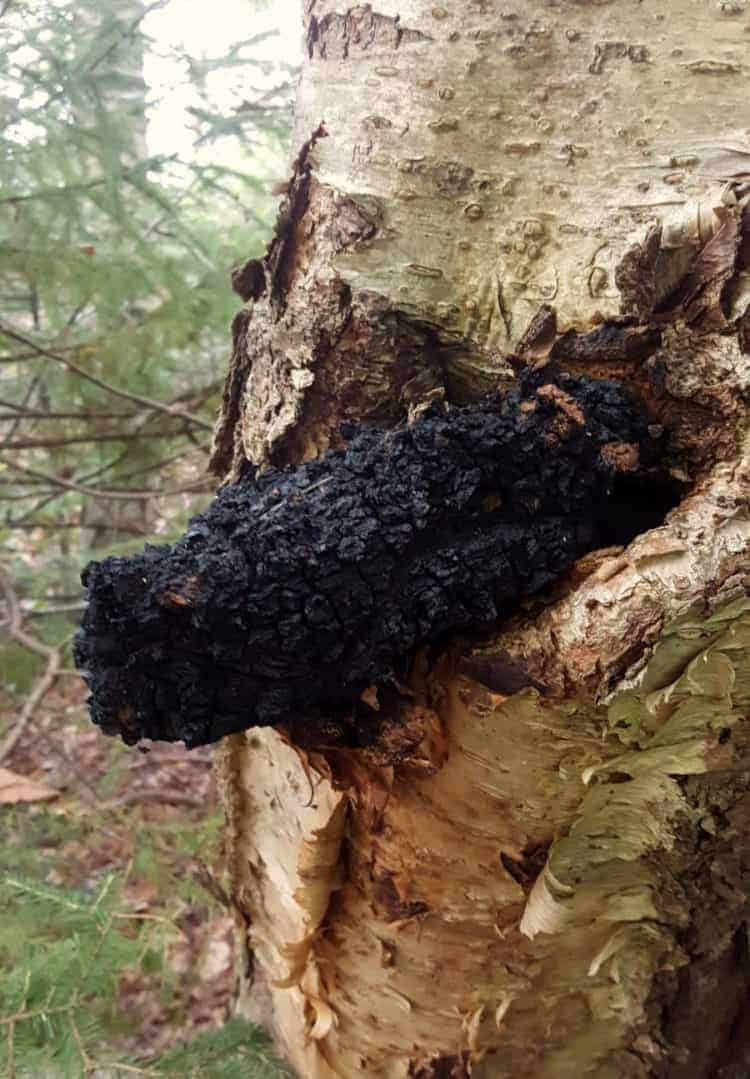
Most often consumed as a tea or tincture, chaga can be found around the world in Russia, Northern Europe, Canada, and the United States. This means that with a little bit of education anyone can start harvesting chaga for their own personal use if they wanted to!
So What Is Chaga?
While it's fine and dandy that chaga is considered a natural health product, and can be purchased whole, ground, or in various preparations, most people lack a general understanding of what chaga actually is.
Chaga is found in Northern climates, and grows wild in Russia, China, Northern Europe, and North America. A species of parasitic fungus that grows on white and yellow birch trees as well as oak, poplar, beech, and alder, chaga will infect and live of it's host tree anywhere from 10 to 80 years before eventually killing the host tree.
Never harvest chaga of a dead or rotting tree, it should always be harvested from live birch and be at least the size of a grapefruit. - Chef Markus Mueller
During it's life cycle chaga will form a black, sterile tumor (or 'canker') that grows on the outside of the tree, as the parasite infects the heartwood.
Easy to harvest year round, the chaga fungus is particularly easy to spot in winter, when there are no leaves to obscure tree trunks. The distinct black canker stands out well in contrast to the white snow, and light bark of birch trees.
The harvested chaga mushroom is dried, and then broken into smaller pieces or ground into a fine powder for use in chaga tea, tinctures and decoctions.
Benefits of Consuming Chaga
As with any natural health product, you should always consult your physician or doctor before consuming chaga for medicinal purposes. The contents of this article are for informational purposes only, and should not be considered medical advice or information.
Chaga has been used by indigenous tribes for both spiritual and medicinal applications , and has in recent years been approved by Health Canada for use as a natural health product along with dosage recommendations. While little scientific research has been done to confirm the effectiveness of chaga as a medicinal ingredient in humans, it's proven time and again to be a popular herbal remedy for many seeking to reconnect with nature and live a healthier lifestyle.
Due to chaga containing record levels of antioxidents, nutirients, minerals, and phyto-nutrients consuming chaga has been linked to:
- boosting your immune function
- boosting overall health and well being
- creating an alkaline state
- Regulating blood sugar
- Treating various types of lung and liver cancers in mice
- Improving Cognitive function
Whether or not Chaga will work as a cure for everyone, it's high contene of vitamins and minerals, is enough of a reason to consume a little every day.
Only larger mature pieces of Chaga taken from the Birch tree will host enough medicine to benefit the human body. Chaga from other species of trees do not have the same constituents as those found in the Birch family. - Blair & Heather from Annada Chaga
Side Effects of Consuming Chaga
As with any natural health product always consult with a licensed doctor or physician before consuming any natural health products, especially while pregnant, nursing, or taking any kind of prescribed medications.
As chaga has been shown to potentially lower blood sugar, you should consult a licensed pysician or doctor if taking insulin, or other diabetic medications.
Chaga grows on birch trees, so anyone with an allergy to birch should avoid consuming chaga.
Harvesting Chaga For Personal Use
Chaga is found naturally throughout North America, as well as Northern Europe, and Russia. As mentioned above, Chaga is surprisingly easy to forage for and harvest. Chaga can be harvested year-round, but is especially suited to foraging in winter, as it is very easily spotted in a snowy forest, and is immune to ice and snow. The black wrinkled looking canker, grows on all species of birch, though only chaga found growing on white birch should be harvested to eliminate the chance of harvesting false or fools chaga.
Chaga is easily identified by its charcoal black color and wrinkled appearance. Once broken open chaga has a distinctively orange core that is almost woody in nature. The black outer color comes from the extremely high levels of melanin in the outer layer of the canker.
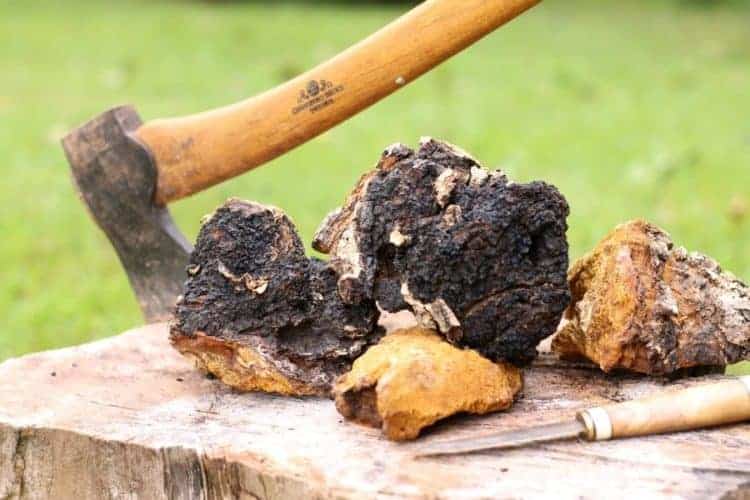
When hunting for chaga, it is best to plan a day trip and set aside a good portion of the day for your excursion. You'll need to bring a pack to carry the harvested chaga in, as well as a sturdy knife, hatchet or axe, to harvest the chaga from the birch. A hatchet or axe can be used to easily knock the tough fungus from the trunk the tree easily. Take caution if climbing to reach chaga, as it can grow quite high up, and you don't want to fall!
Never harvest chaga from a dead or fallen tree, as the canker is only sterile and live while the tree lives. Once the host birch dies, the chaga mushroom will die along with it and develop fruiting bodies to spread to another host.
Harvesting Chaga Mushroom Ethically
Once you have located and identified a birch tree growing chaga, make sure the chaga mushroom is at least the size of a grapefruit, (the larger the better) before harvesting. Larger chaga mushrooms will have a higher concentration of nutrients, as the mushroom has had a much longer time to develop and store nutrients.
Chaga is also extremely slow growing, and can take up to 15 years before reaching a harvest-able size. Leave the smaller specimens to grow and develop for future trips into the forest.
When harvesting the chaga itself, try and one third of the mushroom attached to the tree as it will continue to grow allowing for a future harvest.
Drying & Storing Chaga
Once the chaga has been harvested, it will need to be cleaned and dried before it can be used to brew tea or made into an extract or tincture. Clean the Chaga with these three simple steps.
- Rinse the freshly foraged chaga mushroom in fresh water to remove any debris or insects that may be hiding in it's many crevices .
- Break the chaga into fist sized chunks to speed drying and prevent mold from growing.
- Dry the chaga in a cool dry location until it is light and bone dry. This usually takes about a month.
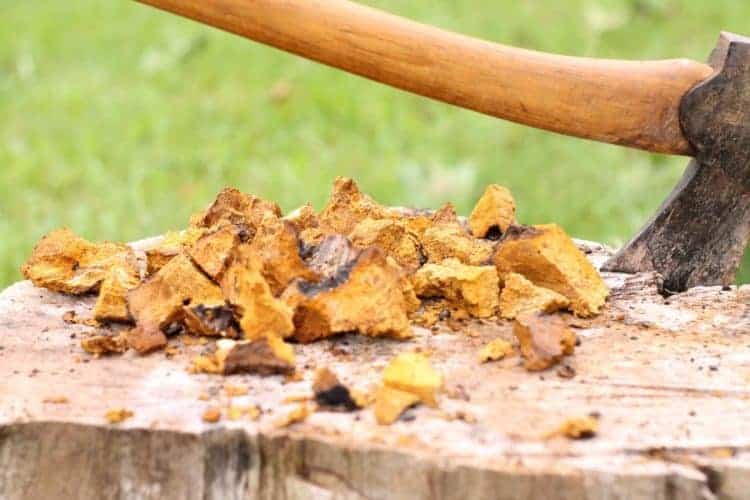
Once dried, the chaga should be stored in an airtight container to prevent it from absorbing moisture from the air. Mason Jars are ideal for this but any large crock or air tight container may be used.
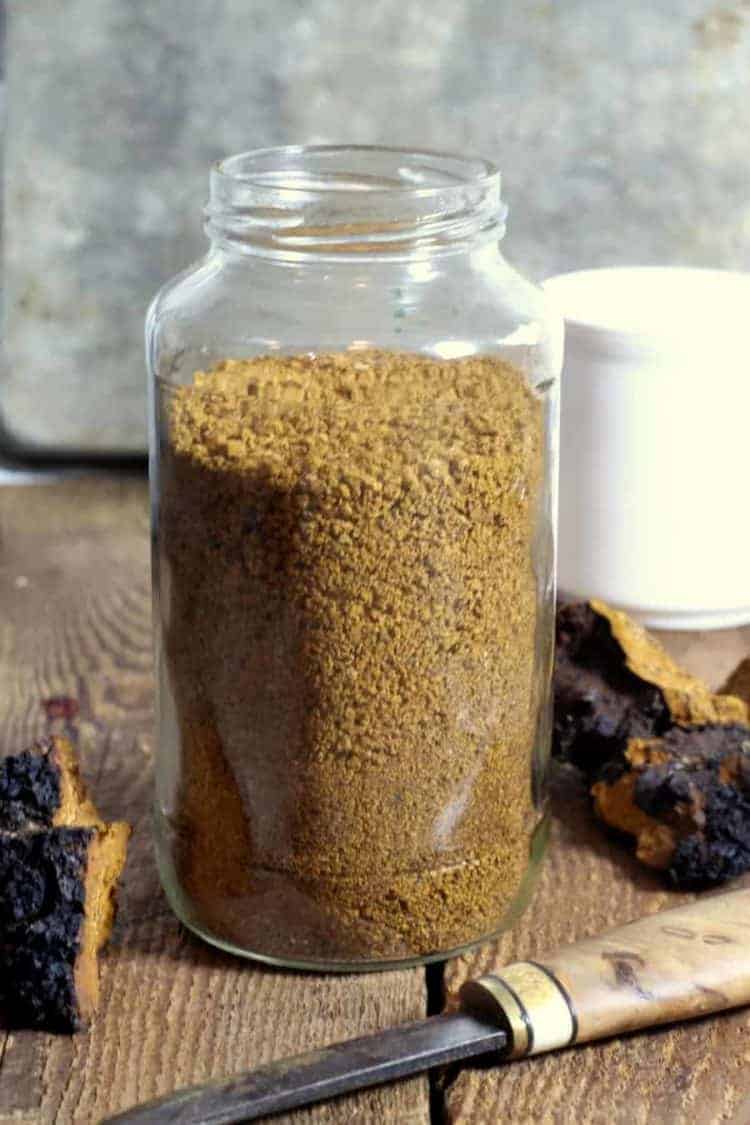
To make storage and future use even easier, you can grind up the chaga chunks into a fine powder which can be used to brew chaga tea, and is easily stored in a kitchen cupboard. Besides being used to make tea and various tinctures, ground chaga can also be used directly in stews, or pureed into smoothies!
Can I Simply Buy Chaga?
Yes of course! If heading into the woods to look for a funky looking fungus isn't your cup of tea, you can still benefit from this wonderful mushroom. As with any natural health product it is best to purchase chaga from a reputable supplier.
In my research I have found Annada Chaga to be of the highest quality. Hand harvested from the wild Boreal Forests of Northwestern Ontario it is guaranteed to be 100% organic and lab tested safe by Ecocert Canada. You can rest assured that purchasing Annada Chaga will provide you with a high quality product that is safe for consumption.
You can Browse and Purchase Annada Chaga Products Here
Other Uses For Chaga
Dried Chaga makes an excellent fire or tinder fungus. While horse hoof fungus, also know as tinder polypore (fomes fomentarius) is more commonly used as a fire starter, chaga has the exceptional ability of holding an ember for extended periods of time.
Once lit, chaga will smolder until the spark has burned its way through the entire mushroom. This can take hours depending on the size of the fungus. This makes chaga ideal for carrying a camp fire through the woods on a hike or long excursion. Simply lite the chaga and let it start to smolder, then place it in a tin can, or other fire proof container and carry it along with you.
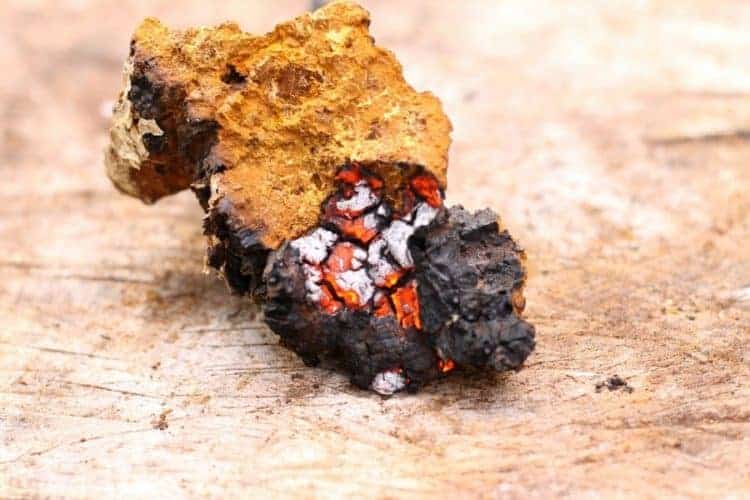
To start a new fire you simply need to hold some dry grass, slivers of birch bark or other tinder to the smoldering chaga, and blow on it to let the tinder catch fire.
Indigenous tribes also used chaga for spiritual purposes, and burning chaga mushroom produces a sweet smelling smoke. The smudge was also used to help repel mosquitoes and other insects.
Have you foraged for Chaga? Take a picture and tag me on Facebook & Instagram: @earthfoodandfire . For more from scratch recipes gardening, and foraging DIY follow me on Instagram & Pinterest

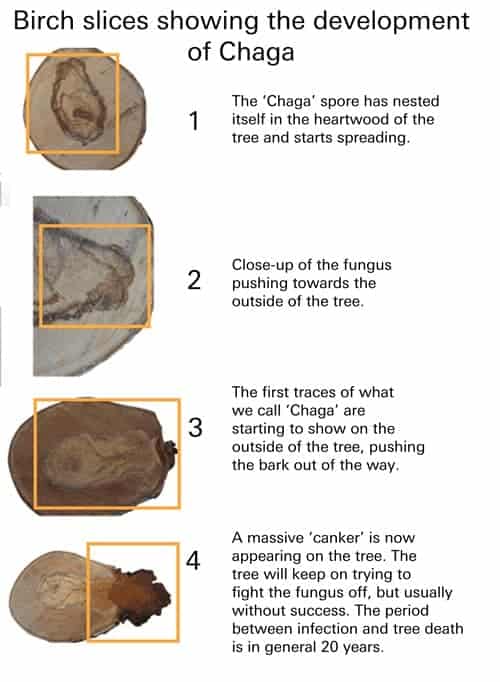
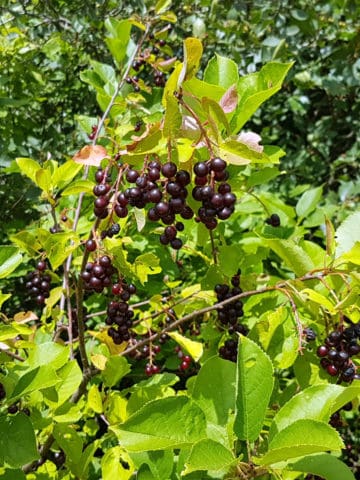
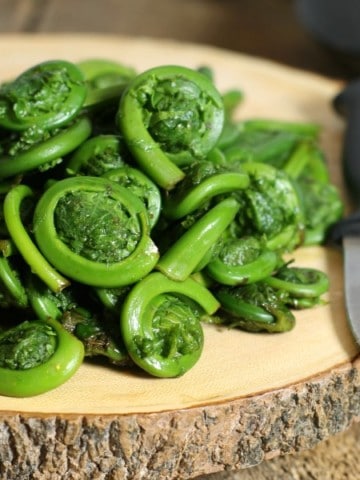
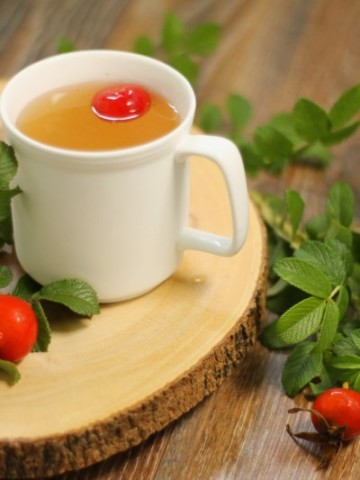
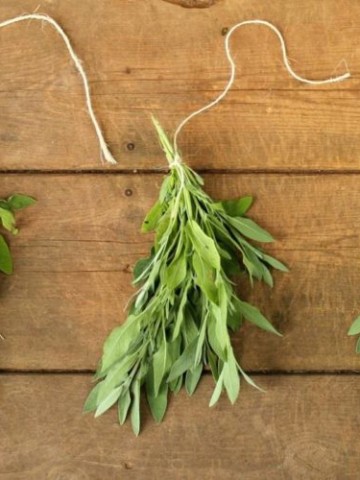
Rosanne Harrison
What is the shelf life of Chaga after wild harvest?
Chef Markus Mueller
Hi Rosanne, I don't have a scientific answer for this, but I would assume as long as the chaga is dry and not moldy or rotten in any way it is good to go!
Jackie
Hello Chef. My Chaga has a lot of black on the outside but much less brown on the inside. Should I knock off some of the black before I break it in to smaller pieces prior to grinding it to make powder for tea? Thanks
Chef Markus Mueller
Hi Jackie, the black outside crust of the chaga is just as edible as the lighter brown inside. No need to remove it.
Terry Keough
Hi
I have seen comments about Chaga on non birch trees suggesting/ stating that it does not have the same properties as from paper bitch. I have only seen this from sellers of Chaga & wonder if there is any science behind this statement or if it is just to be safe, since it grows lathely on paper birch & yellow birch? I am suspect of statements saying the physical make up of the fungus would differ from a birch tree to a poplar or other tree. Generally, fungal properties don't differ much based on their substrate. My guess is the information steering people away from Chaga on non paper birch trees is sales or safety related, but interested in your opinion.
Happy foraging!
Chef Markus Mueller
Hi Terry, I would guess( and in the case of our chaga post above), the statement that only chaga grown on white birch is safe to consume is for safety reasons. As I am not able to scientifically test other types of chage myself, I can not guarantee that they are safe to consume. As the hard data on chaga is limited to begin with, I would assume most literature will only recommend researched data, and not recommend un researched information.
Pam Haack
What is the best way to chop it up, can I use a dehydrater to dry it, and why kind of grinder will make it suitable for 1) tea, and 2) smoothies?
Chef Markus Mueller
Hi Pam, personally I think the best way to chop dried chaga would be with a regular knife or high powered blender that has a food processor like option. It should be noted the dry chaga will dull the blades quite quickly though if you grind alot of it.
You could use a dehydrator to dry the chaga sure, but this can quickly become costly unless you are using solar panels. The cheapest method is yo air dry the chaga.
Peggy Fairbourne
My herbal instructor, Dr. Patrick Jones, says: "The healing properties of Chaga are nothing short of astonishing. This parasitic fungus grows on the trunks of various tree species like birch, beech, elm, alder, ash and hornbeam but is only medicinal if it’s growing on a birch tree (Betula spp.). And why is it that the other trees’ fungal friends aren’t medicinal? It’s because chaga is a parasite and is pulling chemistry from it host tree. If it’s on the wrong tree, it gets different chemicals and can’t make the same medicine."
donna
do you scrap off the black part of the chaga and throw it away when making a tincture?
Chef Markus Mueller
Hey Donna, in my experience no, you do not scrape of the black outer crust. Simply break the chaga into chunks and submerge it in your ethanol or 40% vodka/rum etc.
George Reimer
Wait why soak it in vodka what after let dry and grind down to a powder
Chef Markus Mueller
Hey George, you would soak the chaga in 40% proof vodka or ethanol when making a tincture with it.
Mary
I just made a tincture with ever clear alcohol. It’s 190 proof. First, is this alcohol okay to use? 2nd being the power has almost a shelf life of 2 years, will it still hold its health benefits?
Chef Markus Mueller
Hi Mary, I am not familiar with ever clear alcohol. Any alcohol you use to create products to consume should be food grade though. As always exercise caution when consuming alcoholic products with very high alcohol levels to prevent alcohol poisoning. As for the health benefits remaining after 2 years in an infused tincture, I am unfortunately not sure.
LaVerne aka Mushroom Mel
Thanks for all the wonderful info!